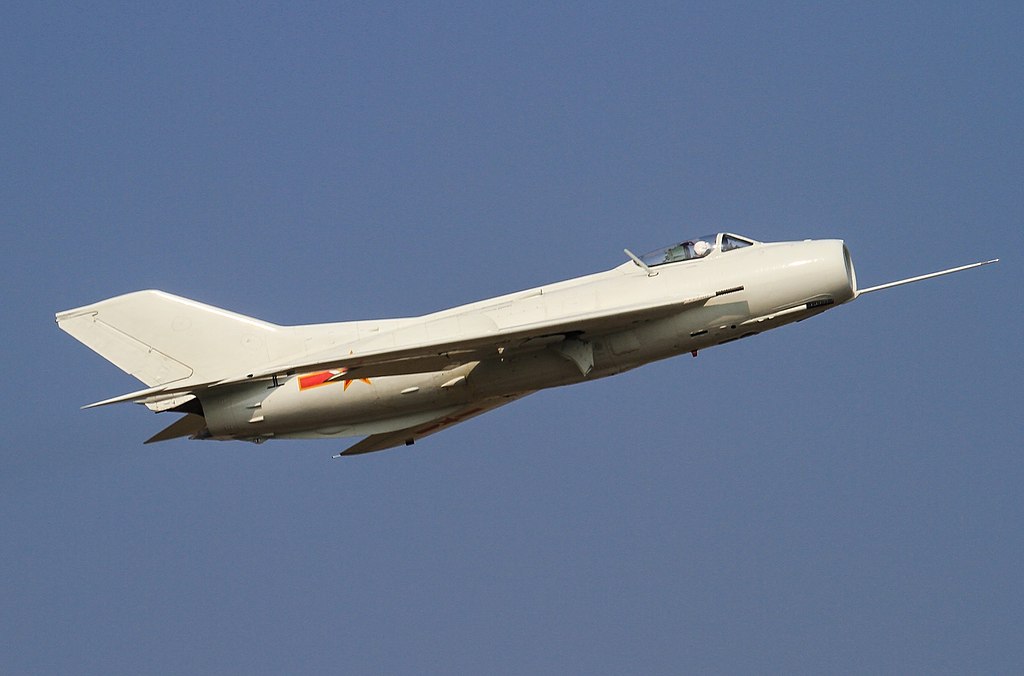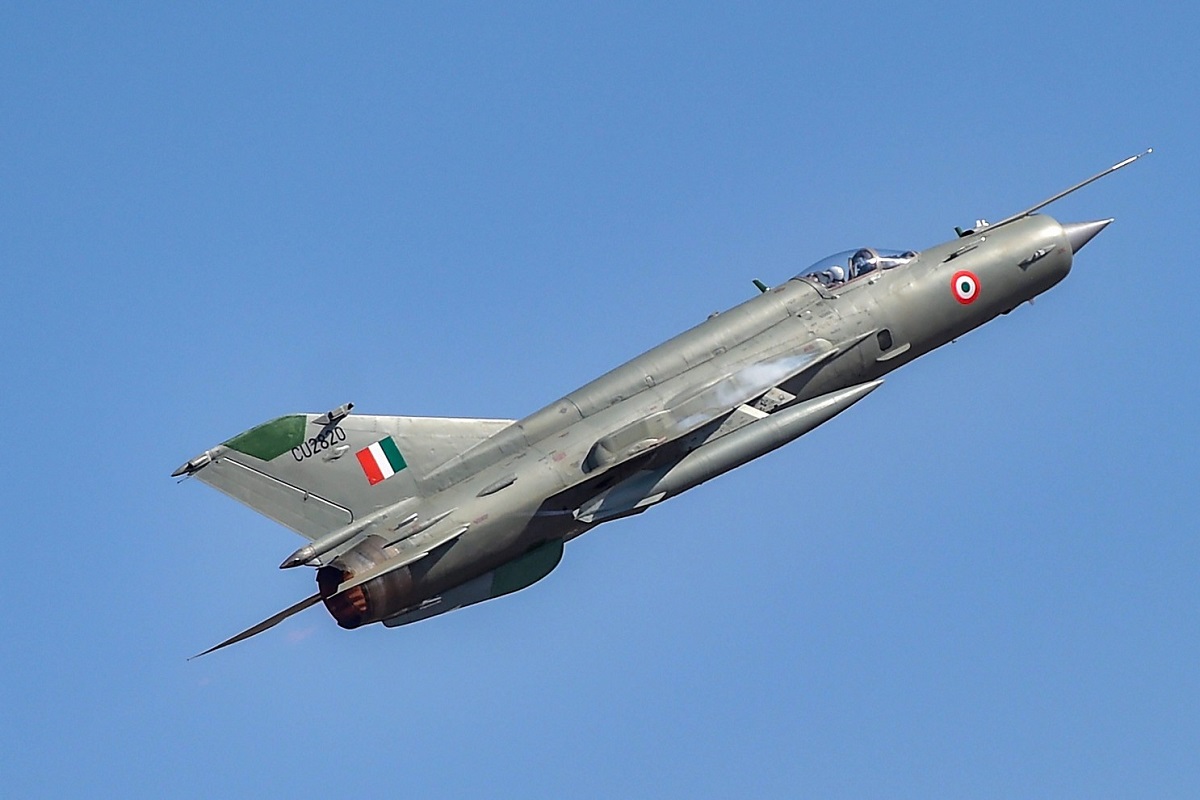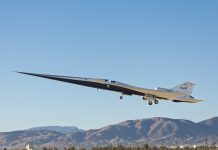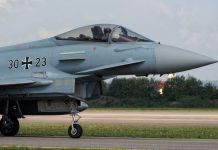Pakistan is burning with people’s protest, and a lit-up F-6 Shenyang fighter jet has become a representative photograph of the same. For aviation historians, the burning of the F-6 supersonic fighter jets is akin to sacrilege.
Video- A PAF Shenyang F-6 (Chinese) monument/dummy Aircraft set ablaze by public reportedly outside a Pakistan Air Force base in Mianwali. #ImranKhanArrested #Pakistan #China #aircraft #PAF pic.twitter.com/r4FcNlSFlE
— EurAsian Times (@THEEURASIATIMES) May 10, 2023
The Chinese version of the Soviet fighter jet MiG-19s paved the way for the development of the legendary MiG-21s.
Protests erupted across Pakistan on May 9th following the arrest of its former prime minister Imran Khan. His supporters stormed an army base in the country’s Punjab province and reportedly set a preserved Shenyang F-6 aircraft on fire.
The fast and maneuverable twin-engine fighter jet designed and manufactured by Shenyang Aircraft Corporation of China was the first purchase of the Pakistan Air Force (PAF) from Beijing that set the tone of defense relations between the two countries.
The export version of J-6 and built on the design of Russian MiG-19, the aircraft remained the “workhorse’ of PAF for a long time.
The F-6, or MiG-19, was the first supersonic fighter aircraft of the erstwhile USSR and a result of the arms race during the Cold War.
Military technology developed at a rapid pace during the Cold War. The MiG-19 was the first mass-produced supersonic fighter aircraft in the world. The Chinese named their license-produced MiG-19s J-6.
NATO christened the aircraft the “Farmer.” The Soviets stopped the production of the aircraft in 1960, building a total of 2500 aircraft, while the fledgling Chinese military industry, facing a resource crunch, manufactured the aircraft till 1981- producing twice as many as the Soviets.

China exported the aircraft to Albania, Bangladesh, Egypt, Cambodia, Tanzania, Pakistan, and Vietnam. Pakistan’s J-6 saw extensive combat during its war against India in 1971, and they also fought against US fighter jets over Vietnam.
In its heyday, the twin engines of F-6 would produce a thrust of 15000 lbs each and climb higher than Mt-Everest in a few seconds, giving spectacular views of the earth’s curvature.
The incredible thrust came from the massive fuel consumption of the aircraft, restricting the flight time of the aircraft to 25-55 minutes.
It was an immensely powerful machine, and it entered the inventory of the Pakistan Air Force after the US put an arms embargo on the sale to both Pakistan and India after the 1965 India-Pakistan war.
PAF was the hardest hit by the embargo and decided to diversify its fleet. And China’s offer of F-6 was the cost-effective option. It was the beginning of the relationship between the two countries, brought together by the mutual foe – India. Pakistan imported a total of 260 F-6 into its forces.

According to senior Pakistan pilots, who have flown F-6, the aircraft was not built for “the faint-hearted,” and it was “a real stick and rudder type flying” often unresponsive at low speeds.
It was difficult to recover the aircraft if it entered a spin at low speed. The Pakistani pilot learned to master the aircraft despite the challenges like the non-availability of trainer aircraft or a simulator.
The lack of understanding of the Chinese language was also a big hindrance in training the pilots on the fighter jet. The aircraft required an “intense pilot workload,” which is why, initially, the PAF only brought in experienced pilots to fly the F-6s.
Pakistan eventually carried out numerous modifications on the aircraft to increase its capability in the roles of air superiority and ground attack. The major upgrading and innovative modifications include the provision of western avionics, Martin and Baker ejection seats, the AIM-9 Sidewinder air-to-air missile, French 68 mm rockets, additional underwing tanks, and under-belly ‘Gondola’ (30 mm Gun) fuel tanks and a special ground-power unit for instantly starting its twin engines to shorten ‘scramble’ time.
In an ode to the “Faithful Warriors” that F-6 was, Retired Air Vice Marshal of Pakistan Air Force Ikramullah Bhatti wrote: “A popular piece of advice at the time from the F-6 veterans to the younger pilots was ‘Lose sight – lose the fight.’ Pilots could not afford to look inside during crucial moments of air combat.”
Owing to this reason, the pilots needed to be well-versed with the F-6 cockpit. But the biggest impediment was the Chinese marking on the switches, lights, indicators, and gauges.
Pakistan’s Rebuild Factory at Kamra had broken into the writing technique of Chinese cockpit lights by appropriately captioning negative films under the light cover, and special decals were made to mark the instruments and controls in English.
“There was the training regimen of blindfold cockpit checks. The experienced pilots could easily select the desired weapon, operate flaps, select and deselect the military or AB setting of the engine with their eyes glued to the adversary,” AVM Bhatti wrote.
The avionics onboard were not much. The only onboard nav-aid on the F-6 was the basic radio compass which, for reasons, “would readily become erratic with the appearance of clouds.”
The F-6 pilots had to memorize maps and know their flying areas well. “Despite all this, the incidents of F-6 pilots getting unsure of their ground position were not uncommon. Imagine how much faith you must have in yourself, in your skills, and in the airplane to do something like that on a daily basis. This is besides the fact that it took sheer guts to control this beast,” Group Captain (retd) Mansoor Mehmood was quoted as saying in the article.

Enumerating its combat capabilities, AVM Bhatti contends it was not an easy jet to shoot down despite the absence of an onboard air-to-air radar. The air combat in an F-6 had to be visual. “Whosoever gained sight of the adversary first had higher chances of success as he could execute his planned tactic first and achieve surprise,” AVM Bhatti added.
During the 1971 war with India, F-6 acquired legendary status. The Pilots of No.11, 23, and 25 squadrons flew the fighter jets in air defense and ground support roles. In total, they flew 650 air defense sorties, and the Pakistan government claimed that these aircraft had seven confirmed kills in aerial combat, including MiG-21, Hunter, and Su-7 aircraft.
The warplanes also flew 184 ground attack sorties.
The PAF bid adieu to the F-6s in 2002. Retired Wing Commander Kamran Malik, a veteran F-6 pilot, said: “We flew a challenging airplane, but with their zest and skill, the pilots could take it to its limits and even beyond. Flying the F-6 always enhanced the fascination of fighter flying.”
- Ritu Sharma has been a journalist for over a decade, writing on defense, foreign affairs, and nuclear technology.
- She can be reached at ritu.sharma (at) mail.com




